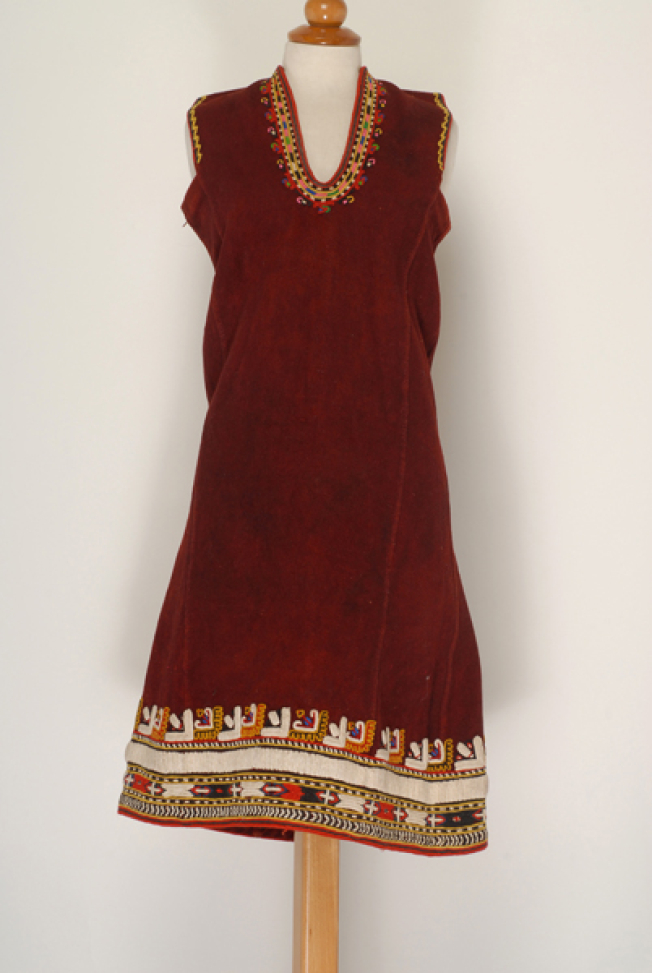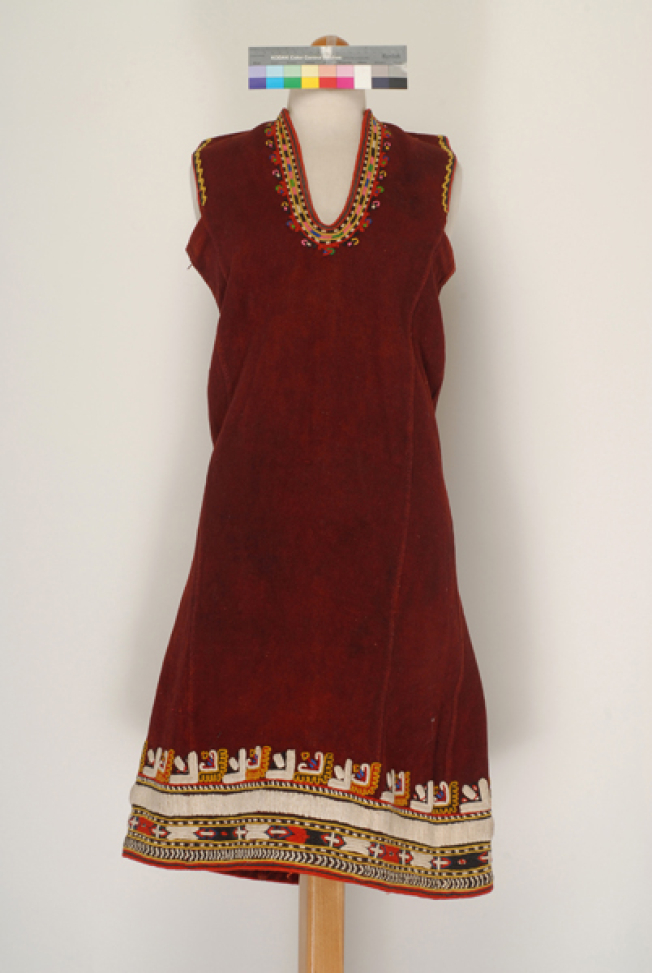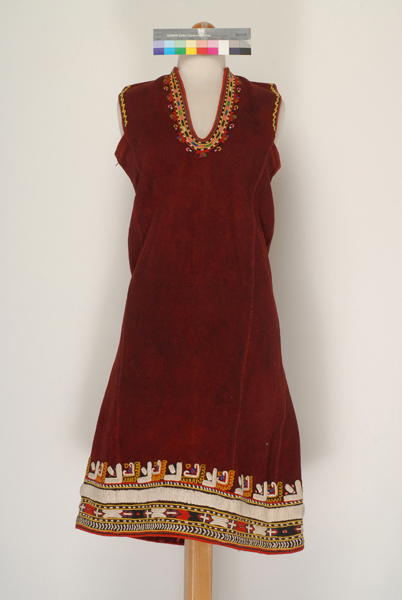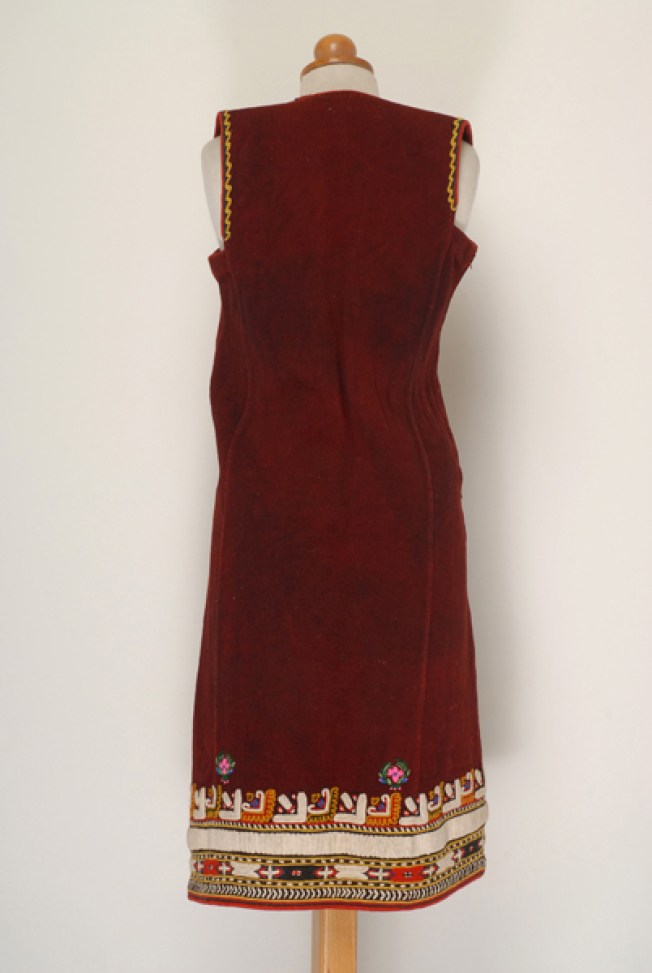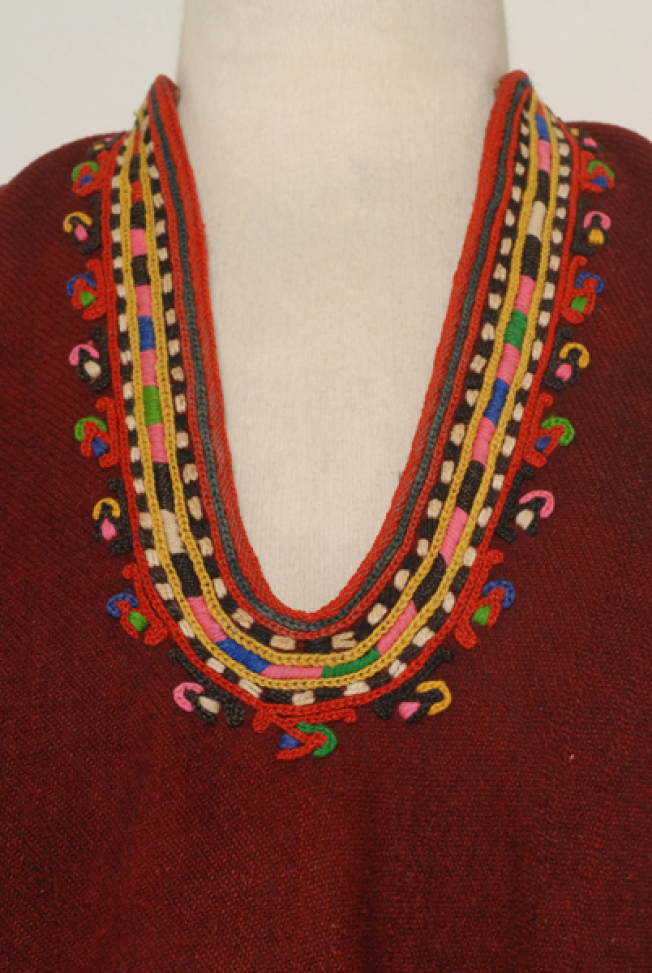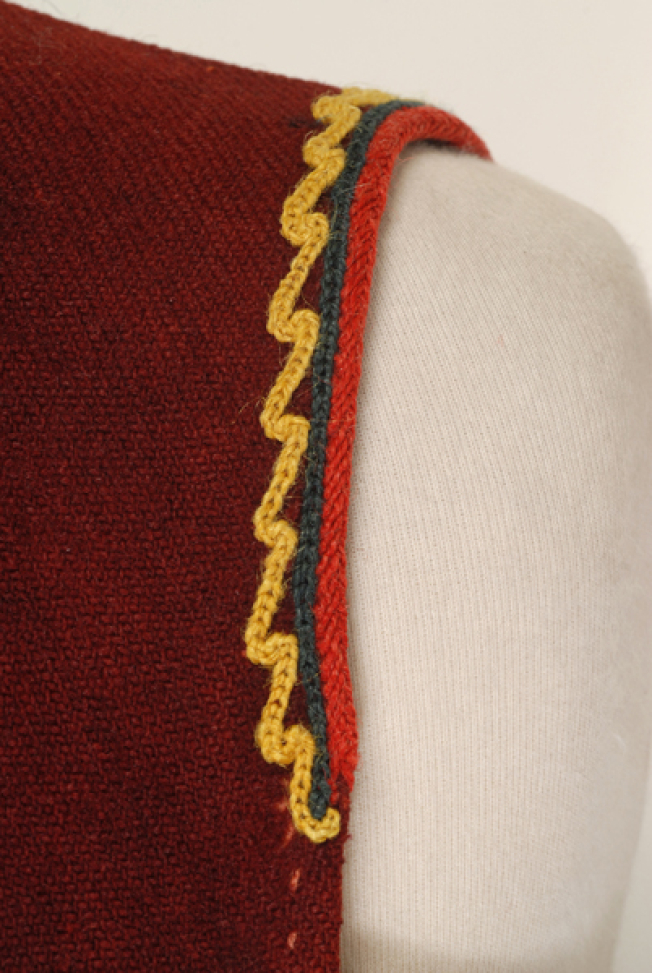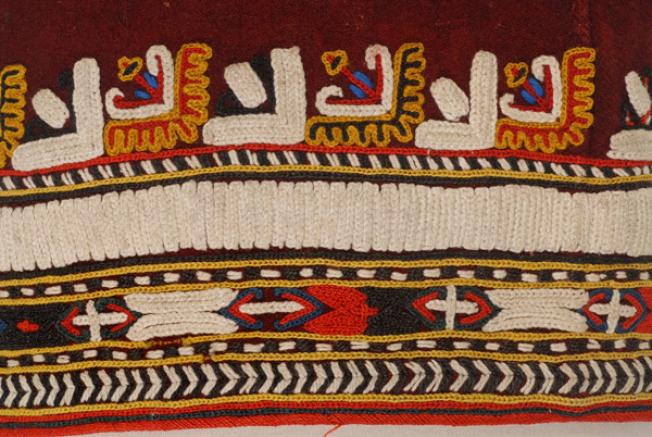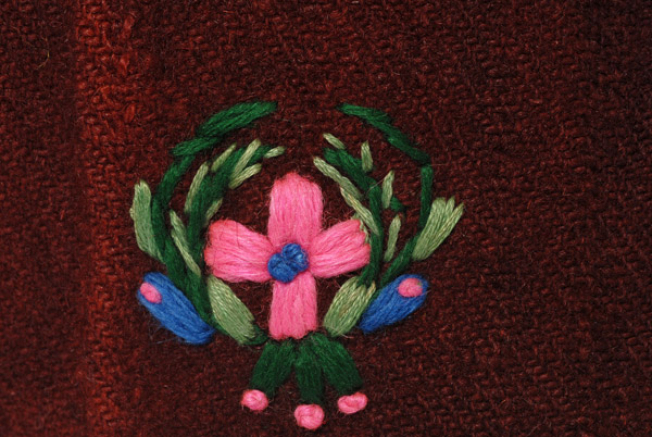foustani (dress)
1701/2
Foustani rizarit me sentouke, foustani (dress) of the betrothed and the newlywed womam
Foustani rizarit me sentouke, foustani (dress) of the betrothed and the newlywed womam
Detail of the decoration at the traile, plastron: gaitani, vitsa, miligona, alatza yiane and stylized motifs
Detail of the decoration at the kavadoura, opening at the arimpit: gaitani, vitsa and tieli thritour
Object Identity
Object ID Number
1701/2
Object name
foustani (dress)
Other / Local name
foustan rizarit me sentouke
Style
peasant
Production date range
beginning of 20th century
Part of outfit
No
Physical Description
Description
Φουστάνι ριζάριτ με σεντούκε, αμάνικο, βυσσινί, γυναικείο φουστάνι που πρωτοφορούν αρραβωνιασμένες όταν "φιλούν χέρι" και νιόπαντρες μέχρι περίπου τα 30 τους. Είναι καμωμένο από αδίμτο (δίμιτο) σαγιάκι (μαλλί της νεροτριβής), από τις ίδιες τις γυναίκες στον αργαλειό. Ύστερα γινόταν το ντουλάπιασμα, το κέντημα στο χέρι και τέλος η βαφή. Τα βαμβακερά νήματα του κεντήματος κατά τη βαφή δεν "έπιαναν" χρώμα. Το φουστάν αποτελείται από ένα μονοκόμματο φύλλο υφάσματος μπρος - πίσω και στο πλάι φαρδαίνει με την προσθήκη τεσσάρων λοξών φύλλων, που ονομάζονται κλίντα, (δύο σε κάθε πλευρά) από το άνοιγμα της μασχάλης, καβαδούρα, και κάτω. Εσωτερικά, το άνοιγμα του αυχένα είναι ρελιασμένο με υπόλευκο, βαμβακερό υφαντό. Για τη διακόσμηση πρώτα στρίφωνουν τα ανοίγματα και τα διακοσμούν με γαϊτάνια μάλλινα.
Η διαδικασία του κεντήματος χωρίζεται σε δύο στάδια. Το πρώτο, με το βάρδε ή κιτρίνισμα, είναι η εκτέλεση της κεντητής διακόσμησης του ποδόγυρου με χρωματιστά νήματα και βελονιά αλυσίδα. Το δεύτερο, με το μπάρδε ή άσπρισμα, είναι η εκτέλεση της διακόσμησης με λευκό, ελαφρά κλωσμένο βαμβάκι, με βελονιά θηλειά. Η διακόσμηση είναι η εξής: κόκκινο γκαϊτάνι, πράσινα, κόκκινα και κίτρινα βίτσα, φούρκεζα (χρωματιστό κλαδί με διχαλωτή απόληξη), οριζόντια ζώνη με καρούλε (χρωματιστοί ρόμβοι με λευκό σταυρό στη μέση) και κλίτσε (τα υπόλοιπα μοτίβα της ζώνης), λευκή μιλιγκόνα (διακόσμηση με βελονιά γαζί ή πατητή), κουδέλα (πυκνό ζιγκ-ζαγκ από λευκή βαμβακερή κλωστή που σχηματίζει ταινία), γιάνε (ταινία με λοξές γραμμές) και τέλος, λευκά και χρωματιστά πελιστέρε (μοτίβα ελεύθερα προς τα πάνω που δεν περιβάλλονται από σειρές). Όλες αυτές οι ζώνες διακόσμησης χωρίζονται με πολύχρωμα βίτσα, σειρές καμωμένες με βελονιά αλυσίδα από μάλλινα νήματα. Πάνω από την οριζόντια διακόσμηση του ποδόγυρου, εσωτερικά από τις πίσω ραφές είναι κεντημένα δύο κλαδάκια, τα ντάλε. Η διακόσμηση στην τραϊλέ, τραχηλιά, γίνεται με κόκκινο γκαϊτάνι, βίτσα, μιλιγκόνα, αλατζά γιάνε και μικρά σχηματοποιημένα μοτίβα. Τέλος, η διακόσμηση στην καβαδούρα γίνεται με κόκκινο γκαϊτάνι, πράσινα βίτσα και τιέλι θρίτουρ, γαϊτάνι κλειστό, ζιγκ-ζαγκ. Στην καβαδούρα δεξιά έχει μεταλλικό φερμουάρ 30εκ. (μεταγενέστερη επέμβαση).
Decoration & Patterns
Decoration
geometric decoration
Decorative patterns / subjects
fourkeza, vitsa, klitse karoule, miligona, koudela, yiane, tieli thritour
Decoration
religious motifs
Decorative patterns / subjects
small crosses
Decoration
stylized decoration
Decorative patterns / subjects
pelistere
Decoration
vegetal decoration
Decorative patterns / subjects
dale
Height
1.050
Width
0.310
Production
Maker / Designer / Brand
women themselves
Production date range
beginning of 20th century
Production place (Country | Geographic Area | Prefecture & Region)
-
Eastern Thrace (Mega Zaloufi)
Material
cotton
cotton thread
fullen wool fabric
wool cordon
wool thread
Techniques
applique
handwoven fabric
handwoven fabric,
dimity fabric
handwoven fabric,
nerotrivi (fulling-tub), ntoulapia
traced design embroidery,
chain
traced design embroidery,
daring or bouble running
traced design embroidery,
loop
Use
Population / Cultural / Ethnic group
refugees
User
woman
Age
teenage girl
Status
betrothed girl
Occasion
festive
Purpose
It is worn for the first time when they "kiss the hand"
Date range
beginning of 20th century
Population / Cultural / Ethnic group
refugees
User
woman
Age
young woman
Status
newlywed woman
Occasion
festive
Purpose
While they are still young up to their thirties
Date range
beginning of 20th century
Place of use (Country | Geographic Area | Prefecture & Region)
-
Eastern Thrace (Mega Zaloufi)
Acquisition
Acquisition method
Purchase
Publications
Object publication history
Documentation
Research bibliographic references
Image license
Use the file or the thumbnail of the image according to the license:
CC BY-NC-ND 4.0
Attribution-NonCommercial-NoDerivatives





